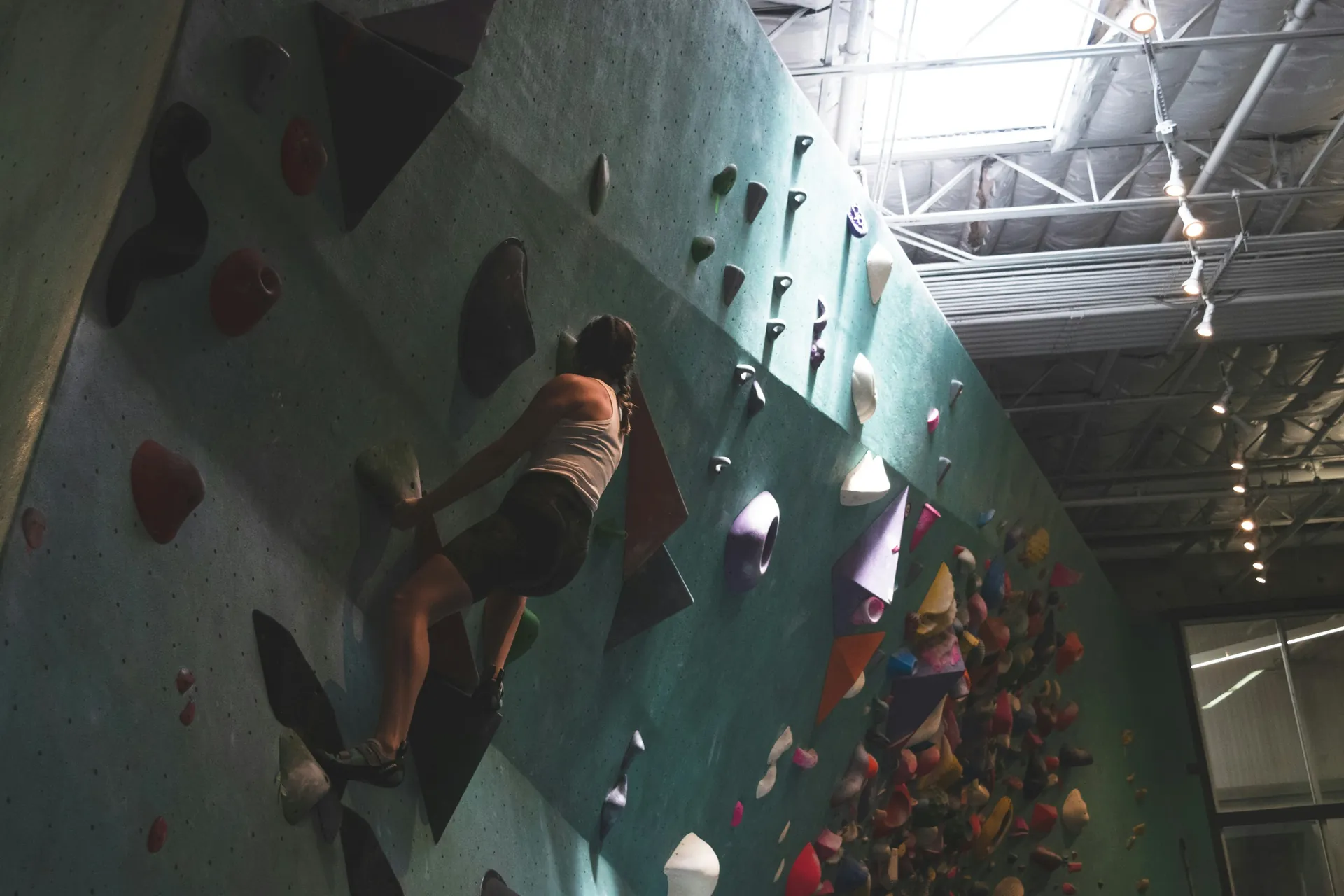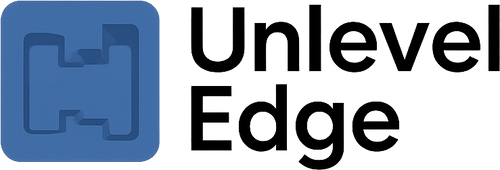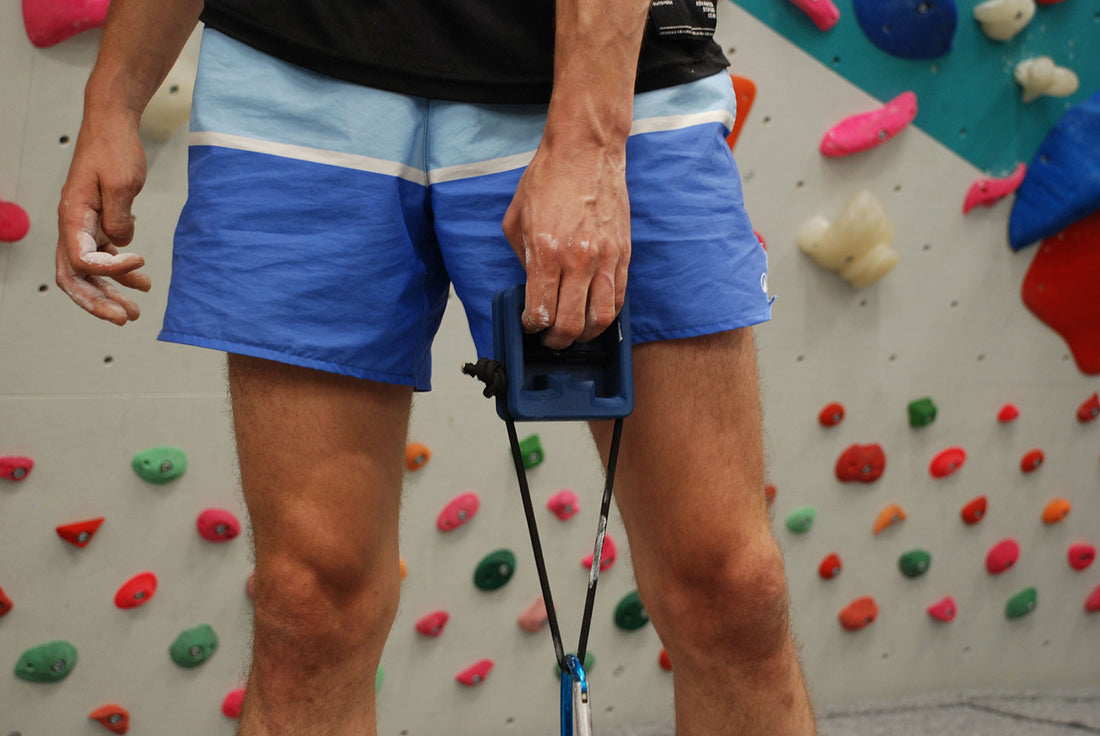If you’re looking to elevate your climbing training with a focused, measurable, and versatile tool, tension board climbing might be exactly what you need. The tension board is a specialized training board designed to develop finger strength, technique, and skill progression through customizable setups and a variety of hold sets.
Whether you are a beginner or an advanced climber, the synergy between the board’s angles, hold arrangements, and the companion app’s features helps create high-quality sessions tailored precisely to your needs. This innovative training tool offers climbers the ability to track benchmarks, switch layouts seamlessly, and evolve their training regimen anytime.
From improving tension in your fingers to mastering gripping techniques on dual texture holds, tension board climbing is both an art and a science that suits many training goals and disciplines.
What makes the Tension Board distinct
The Tension Board stands out in the world of climbing training for several key reasons that make it an exceptional tool for climbers at any level. First, it features high-quality wood holds, crafted from various hardwoods to provide a distinctive low-friction texture.
This texture challenges your grip in a way that plastic or resin holds cannot, forcing you to engage more tension and perfect your technique rather than relying on friction alone.
Another important feature is the board’s symmetrical mirror layout option. This lets you train both sides of your body equally, helping to eliminate strength imbalances and fostering balanced skill development.
The mirror layout isn’t just a random design choice, it’s an innovative feature that lets you easily compare your left and right side to identify weaknesses and address them systematically. Alternatively, the spray layout offers more varied sequences with a high quantity and diversity of holds, creating unique challenges that push your problem-solving skills further.
Additionally, the Tension Board offers consistent layouts across different locations, making it possible for climbers around the world to train on comparable problems. This consistency, paired with a comprehensive problem library in the app, enables you to benchmark your performance accurately and track your progression over time. Whether you’re at your home gym or a remote facility, you can confidently measure your progress and compare your benchmarks with other climbers.
All these features combined the premium wooden holds, the choice between mirror and spray layouts, and the standardized problem sets make the Tension Board a truly versatile and innovative platform. It evolves with you, giving you the option to switch layouts anytime as your skills and training needs change.
This adaptability ensures that your training sessions remain engaging and effective, continually reflecting your climbing goals.
Angles & frames (choose your setup)
Choosing the right angle and frame for your tension board setup is essential to tailor your training focus. Shallower angles, usually around 25° to 30°, emphasize footwork and efficiency.
At these more moderate inclinations, you are encouraged to engage precise movement, balance, and weight distribution skills that translate directly to better technique on real rock and gym walls. This setup is ideal if you want to develop smooth climbing motions with deliberate tension control rather than brute strength.
On the other hand, steeper angles roughly between 35° and 45° place a stronger emphasis on power and power-endurance. These settings force you to rely heavily on grip strength, body tension, and explosive moves, helping to build finger and hand strength, as well as overall climbing-specific endurance.
The steeper the board, the less friction you have, meaning you must "own" every hold actively and generate continuous tension throughout your body.
Some models allow for adjustable tilt, making it easy to switch angles and evolve your training program. Selecting an angle that suits your current training goal and skill level is essential to get the most out of the board. Choose the right board to ensure safe and effective progress.
Whether you’re honing your footwork at 25° or pushing your power limits at 45°, the layout and angle together create an adaptable platform that serves your personal progression.
Hold Sets, Orientation & Foot Rules
Before you start training on your Tension Board, it’s important to match the official layout and hold orientation precisely. The board’s hold sets are designed with a specific orientation that influences how each problem feels and determines how tension must be applied.
Ensuring consistency in hold rotation allows you to reliably compare sessions, track progression accurately, and engage the correct muscles effectively.
The Tension Board provides two main layout options:
- Mirror Layout: This flips problems symmetrically, helping you balance training between both sides.
- Spray Layout: Features varied hold orientations to simulate a more realistic outdoor climbing experience.
Whichever layout you select, ensuring that holds are oriented as prescribed is key to maintaining standardized difficulty and maximizing the effectiveness of each problem.
Foot rules are another essential aspect to follow for consistent logging and progression. Generally, there are two approaches:
- Feet Follow Holds: Foot placements are restricted to marked footholds, providing a structured challenge.
- Feet Anywhere: Allows more freedom in foot placement, offering flexibility during climbs.
Both methods have their advantages, but choosing one and applying it consistently in your training sessions is critical. This consistency ensures comparability with problem libraries and benchmarks, making your progress tracking both meaningful and motivating.
App basics: filters, symmetry mode, benchmarks
The Tension Board app is a powerful companion that enhances your training by letting you tailor and track your climbing sessions effectively. One of its key features is the ability to filter climbs by angle, grade, and hold set.
This means you can quickly find problems that match your preferred training style whether you want to focus on easier holds at a shallower angle or ramp up the difficulty with tougher holds on a steeper board. Filtering ensures your sessions are purposeful and aligned with your current training goals.
Activating symmetry mode, also known as mirror mode, is another essential option in the app. This mode supports balanced training by presenting climbs and their mirrored counterparts.
Using this feature helps you identify and correct side-to-side imbalances, ensuring that both your dominant and non-dominant sides develop evenly. The mirror layout also allows for safer training, especially if you’re managing an injury on one side, as you can flip climbs to avoid aggravating it.
The app also empowers you to star or favorite benchmarks: these are climbs you want to master or revisit frequently. By marking benchmarks, you create a personalized library of targets, making it simple to focus on meaningful progression rather than accumulating random climb attempts.
Logging your attempts and sends is essential as well, helping you avoid "junk volume" unproductive training with no clear purpose. Detailed logging keeps your training data organized, so you can analyze performance, recognize plateaus, and plan smart progression.
Session types (quality over quantity)

When training on your tension board, it’s essential to focus on one clear objective per session rather than trying to do too much at once. Prioritize quality over quantity by taking long rests between attempts and stopping a session as soon as your timing or footwork begin to degrade. Maintaining precision ensures that every move reinforces good habits and reduces the risk of injury.
Limit bouldering (power)
For power development, select 2 to 3 near-max difficulty problems from your hold set. Aim for 3 to 5 high-quality attempts on each problem, taking 2 to 4 minutes or more of rest between efforts. Limit bouldering sessions to maximize effectiveness and safety.
During these attempts, emphasize precise foot placements and strong body tension to maximize the training stimulus while maintaining control and form.
Density blocks (power-endurance)
Power-endurance sessions focus on timed sequences or “density blocks” where you link together moderate difficulty problems or complete repeated laps for 30 to 60 seconds. As you progress, increase the duration of these intervals to build endurance, but always preserve good form and smooth technique rather than sacrificing quality for quantity. Climbing endurance training is essential for sustained performance.
Skill blocks (symmetry/mirror focus)
To improve skill and balance, use the symmetry mode on your Tension Board app and alternate between mirrored problem versions. Focus on quiet, controlled footwork and engaging your hips efficiently during 20 to 30 minutes of focused practice.
This approach boosts coordination and helps address imbalances between sides, complementing your strength and endurance training blocks.
Warm-up & safety (mandatory)
Warming up properly before your tension board session is absolutely mandatory to prepare your body, enhance performance, and reduce the risk of injury. Start with 8 to 12 minutes of light cardio or pulse-raising exercises combined with mobility work. This helps to get your blood flowing and loosens your joints and tendons.
Next, transition to easy board movement using the bigger holds. The goal here is to focus on smooth, controlled motion without putting unnecessary strain on your body. Gradually progress to sub-maximal climbing practice on the board to further prepare yourself.
During your warm-up on the board, prioritize using open grip or half-crimp hold positions instead of full crimp. This is important for protecting your finger tendons. Pay close attention to any sharp or unusual finger pain, if you experience this, stop immediately to avoid injury. A gradual warm-up sequence that emphasizes movement quality and proper tension buildup will set the stage for an effective and safe climbing session.
Weekly Structure by Level (Non-Consecutive Hard Days)
Structuring your weekly tension board training with care is essential to balance progress with injury prevention. It’s key to separate hard finger or board-specific days, giving your tendons and skin sufficient recovery. Tailor your schedule to your personal tolerance levels, and always listen to your body to avoid overtraining.
Beginner to Board Use
If you’re new to the tension board, aim for 1 to 2 sessions per week at a shallower angle, focusing primarily on technique development. Occasionally incorporate limit attempts to begin building finger strength, but prioritize form and efficiency over intensity.
Strict rest days around these sessions are vital to allow your skin and tendons to adapt safely.
Intermediate
Intermediate climbers can increase to 2 to 3 sessions weekly, ideally dividing the focus into:
- One limit power session
- One power-endurance density block
- One skill or symmetry-focused session
Ensure 48 to 72 hours of rest between hard finger or limit days to allow your tendons to recover and minimize the risk of injury.
This balanced approach supports progression while maintaining training quality.
Advanced
At the advanced level, aim for 3 to 4 training sessions per week, incorporating structured cycles that include:
- Limit bouldering
- Density blocks for power-endurance
- Benchmark-focused days for testing progression
After 4 to 6 weeks of intense training blocks, schedule a deload week with reduced volume and intensity. This facilitates recovery and skin regeneration, ensuring sustainable long-term gains.
Progression & testing
A smart progression strategy is essential for continuously improving your climbing skills on the tension board. It’s recommended to re-test selected benchmarks every 2 to 3 weeks to objectively measure your advancement.
When testing, change only one training lever at a time, this could be increasing the time spent on a density block, raising the intensity or grade of problems, or adjusting rest periods. This incremental approach helps isolate what works best for your development.
Logging your attempts, total send time, and perceived effort during each session is important. Detailed records allow you to track trends in performance and fatigue, preventing “junk volume” and ensuring your sessions remain purposeful. Over time, this data provides valuable insights into your strengths and weaknesses, guiding future training cycles and enabling targeted adjustments that drive steady progress.
Skin, Tendons & Recovery
Taking care of your skin and tendons is critical when training on a tension board. The intense finger tension and repetitive contact involved can lead to damage if neglected. Regularly file your calluses to keep them smooth and reduce the risk of painful tears. Additionally, keep your skin hydrated with climbing-specific balms or salves designed to maintain skin health.
Balancing moisture is key, avoid over-moisturizing before sessions to prevent slick skin, but maintain enough hydration to preserve flexibility and prevent cracking.
Avoid high-volume training on full crimp grips, as they place extreme stress on tendons and significantly increase the risk of injury. Instead, prioritize open or half-crimp positions wherever possible, particularly during warm-ups and submaximal sessions. To maintain balanced upper-body strength and reduce overuse injuries, incorporate antagonistic muscle exercises and shoulder care into your routine. These practices are essential for injury prevention, especially in climbing.
Finally, ensure you allow at least 48 to 72 hours of rest between hard finger or tension board sessions. This recovery window is essential for both tendon repair and skin regeneration.
Ignoring these rest periods can lead to chronic injuries and setbacks. By practicing mindful skin maintenance, tendon care, and scheduled recovery, you’ll maximize your progress and stay healthy throughout your climbing journey.
Troubleshooting & Common Mistakes
One of the most frequent errors climbers make on the tension board is accumulating too much volume without focusing on quality. To avoid this, cap your attempts per problem, ensuring each try is fresh and deliberate.
Instead of chasing grades blindly, build a benchmark ladder: a structured set of problems at progressive difficulty levels to encourage sustainable and measurable improvement.
Ignoring symmetry in training is another common pitfall. Incorporate mirror sessions regularly to balance strength and skill between both sides of your body, reducing imbalances and the risk of injury. Poor footwork often limits progress as well; dedicate time to quiet-feet drills that emphasize precise, controlled foot placements to make your movements more efficient and reduce unnecessary energy expenditure.
Finally, inadequate rest between sessions can lead to overuse injuries and stagnation. Use a timer or schedule reminders to ensure you get the recommended 48 to 72 hours between hard finger or limit sessions, giving your skin and tendons ample time to recover.
By addressing these issues: capping attempts, building a benchmark ladder, training symmetry, focusing on footwork, and prioritizing rest, you can troubleshoot common obstacles and optimize your tension board training for lasting success.
Conclusion
The Tension Board stands out as a remarkable training tool, offering high-quality wooden holds, adaptable layouts, and precise angle adjustments to aid climbers in enhancing their strength, technique, and balance. With the support of the accompanying app, you can customize your sessions, track benchmarks, and prioritize quality over quantity to ensure steady and smart progression.
Always remember to warm up properly, take adequate rest, and pay attention to skin and tendon care. Additionally, incorporating symmetry training is essential to prevent imbalances.
By setting clear goals and maintaining consistent training logs, you’ll build both sustainable power and refined skill. Embrace the Tension Board system today and take your climbing performance to the next level.
FAQ
How do I properly set up the angle and kicker on a Tension Board for optimal training?
To set up the angle and kicker on a Tension Board for optimal training, start by installing the kickboard at the base. It should be attached by hinges that allow adjustment from 90 degrees to vertical. Use a hoist or support system to hold the board steady at your desired training angle. Ensure the board surface is square, and the plywood is beveled appropriately to enable smooth adjustments.
Proper hinge installation and side framing support are essential for safety. This ensures the board can pivot securely, allowing you to adjust the angle for varying difficulty levels and body tension requirements during training.
What benchmarks or grading system should I use to track progress on the Tension Board?
The Tension Board uses an established grading system based on consensus and repeated problem attempts. Reference classic benchmark problems created by setters like Will Anglin for consistency. The grading system enables smooth progression from easier to harder problems, allowing climbers to track improvements effectively.
Utilize the LED feedback system to monitor your progress and sort problems by "Most Repeats" for a reliable measure of difficulty.
How can I use the symmetry of the Tension Board to identify and train climbing weaknesses?
The Tension Board's symmetric (mirror) layout allows climbers to compare performance on the left and right sides directly. This helps to identify imbalances and weaknesses by attempting equivalent moves on each side. Training both sides symmetrically builds balanced strength and technique, enabling targeted improvement on weaker limbs or movements.
Incrementally adjusting wall angles and hold difficulty further supports progression while addressing specific deficits.
What hold types and difficulty levels are available on the Tension Board for balanced skill development?
The Tension Board offers four levels of hold difficulty: easy, intermediate, advanced, and hard. These levels cater to a wide range of skill levels, promoting balanced progression for climbers of all abilities.
It features high-quality wooden holds and dual-tex polyurethane holds. Difficulty can be scaled further by adjusting the wall angles, providing versatile training opportunities for climbers at any level.

